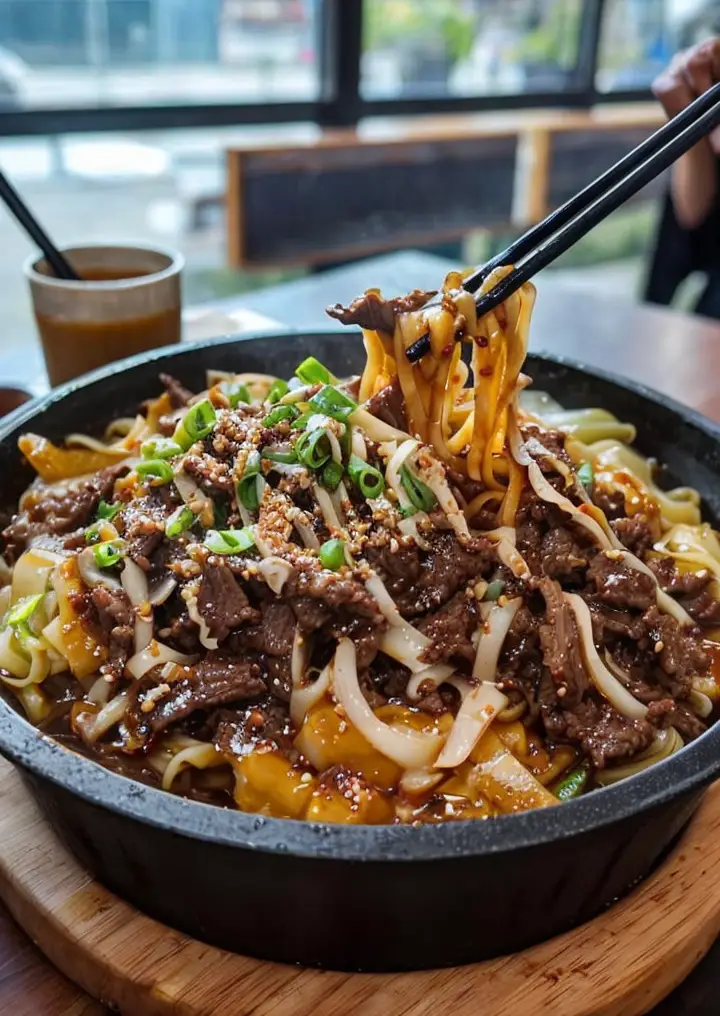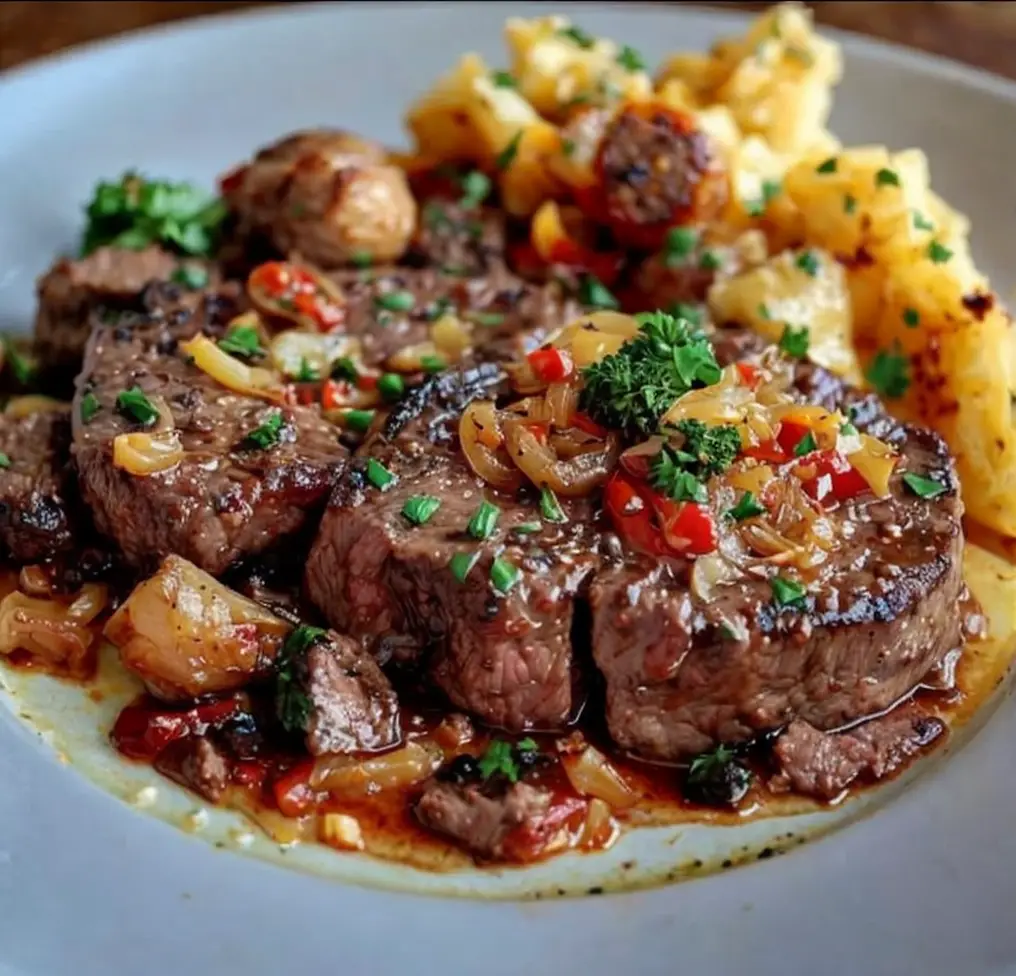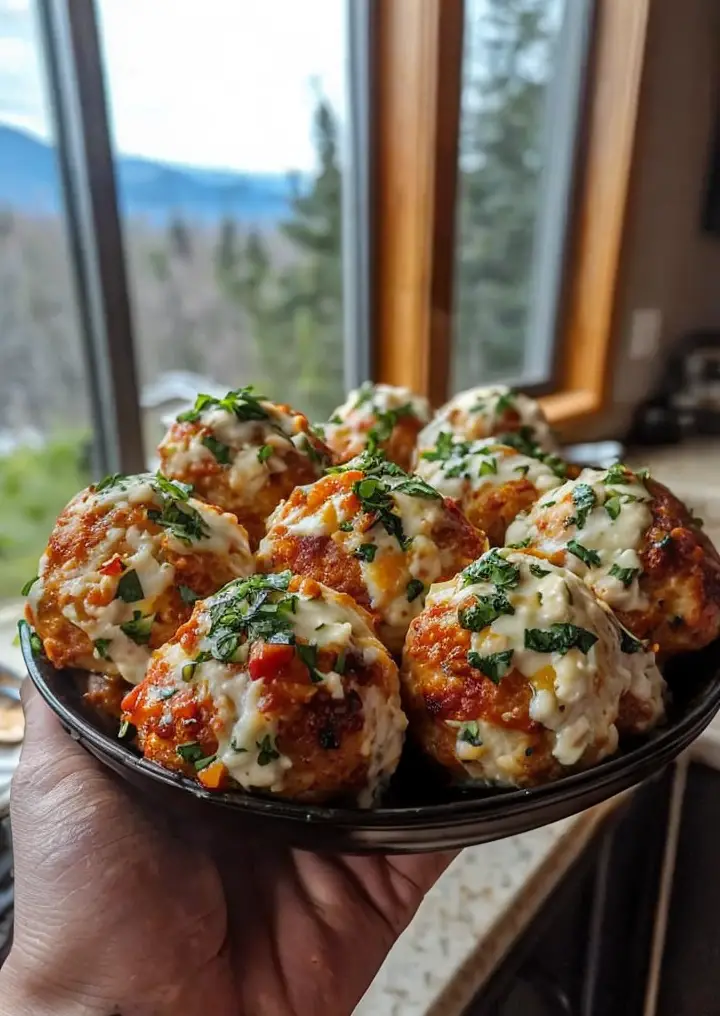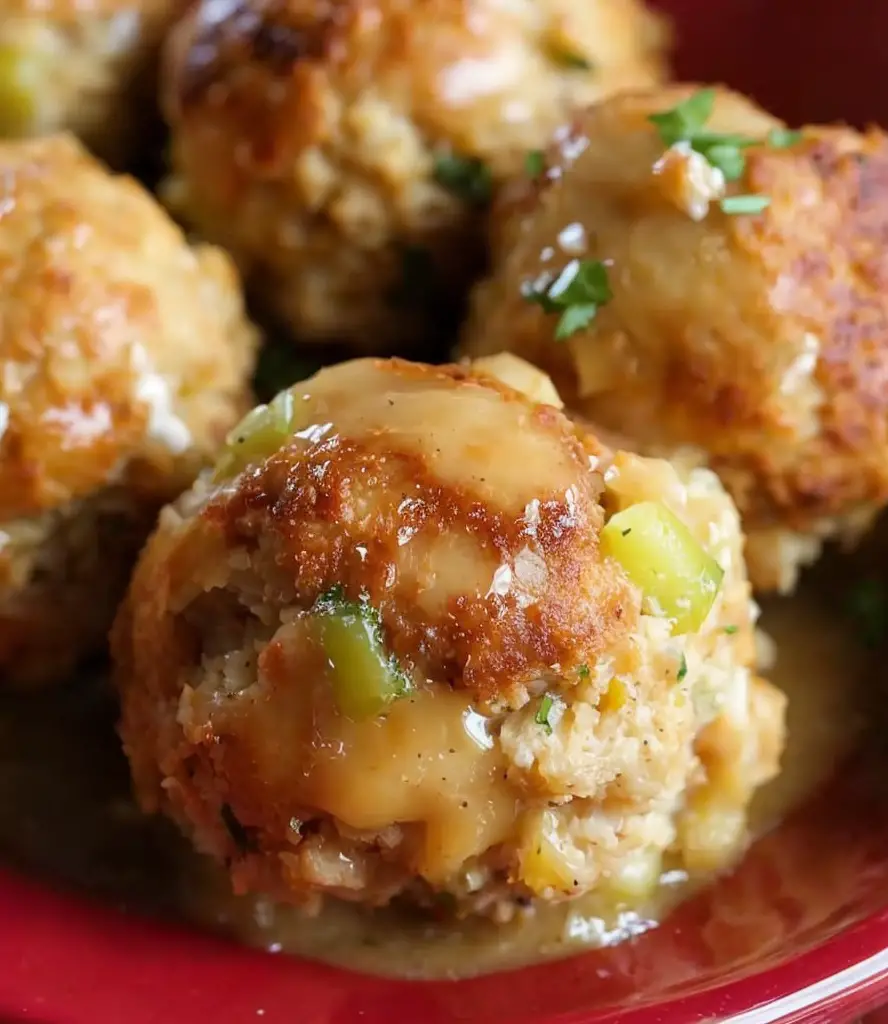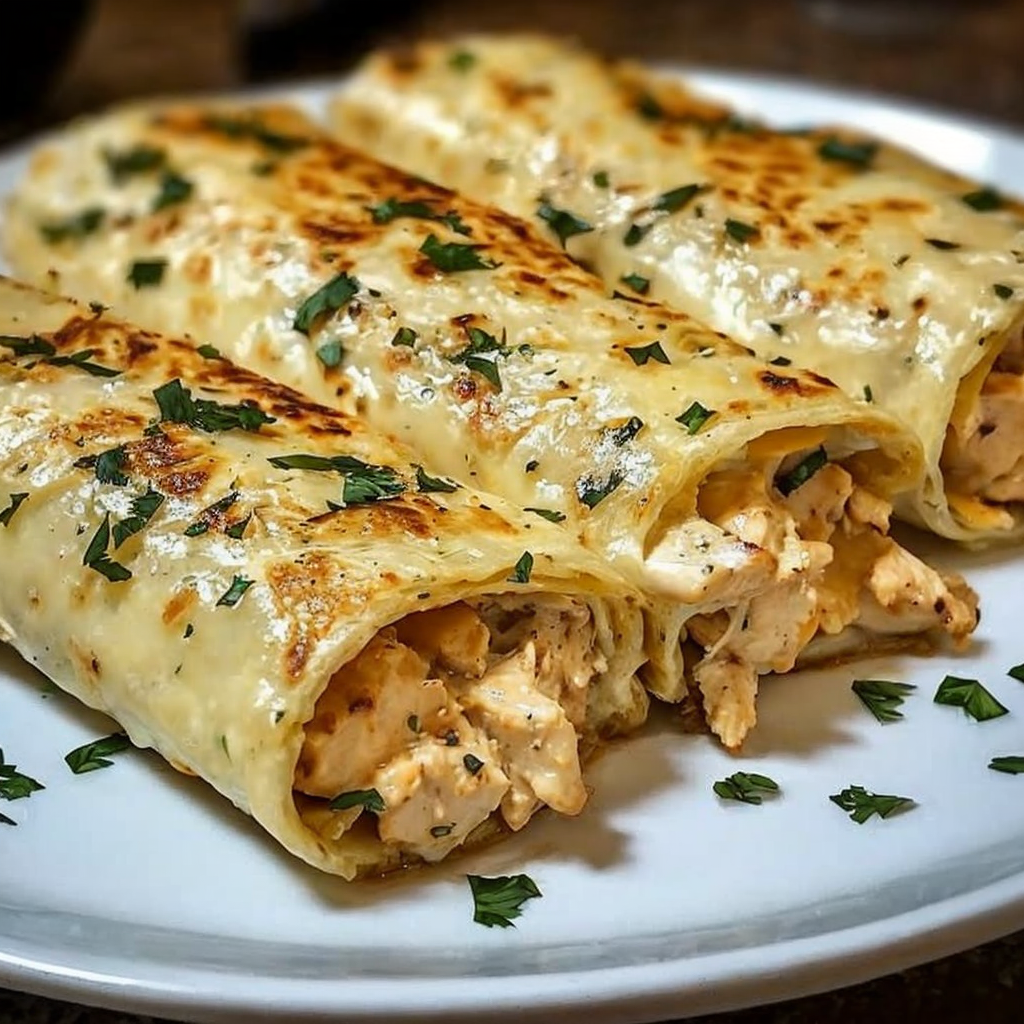Sticky Beef Noodles: A Delicious Asian-Inspired Delight
Sticky Beef Noodles is a culinary adventure that will transport your taste buds straight to the vibrant streets of Asia. This dish expertly combines tender beef with the chewy texture of noodles, all enveloped in a beautifully rich and sticky sauce. The harmony of sweet, savory, and umami flavors will capture your heart and palate from the very first bite, leaving you longing for more. Whether you’re looking for a delightful weeknight meal or a dish to impress guests at your dinner table, Sticky Beef Noodles is sure to satisfy.
The preparation of Sticky Beef Noodles creates a delightful aroma that wafts through your kitchen, promising comfort food at its finest. As you stir fry the marinated beef, the savory notes blend with garlic and ginger, creating a fragrant base that enhances the dish’s overall appeal. Coupled with colorful vegetables, each element not only adds to the flavor but contributes visually, resulting in a feast for the eyes as well as the stomach.
Quick Recipe Highlights
- Flavor Profile: A perfect blend of sweet soy sauce, savory beef, and the kick of garlic creates a complex flavor that is truly addictive.
- Texture: The beef is tender and juicy, while the noodles provide a delightful chewiness, offering a satisfying mouthfeel.
- Aroma: Notes of garlic, ginger, and soy sauce fill the air, providing a warm and inviting atmosphere as you cook.
- Visual Appeal: The dish boasts vibrant colors with fresh vegetables and glossy noodles, creating an inviting plate that is hard to resist.
- Skill Level Needed: This dish requires some cutting and stir-frying skills but is relatively easy for a confident home cook.
- Special Equipment: A large wok or a non-stick skillet is essential for ensuring even cooking and achieving that signature stir-fry finish.
Recipe Overview
- Difficulty Level: Sticky Beef Noodles is classified as medium difficulty, balancing between straightforward techniques and potential culinary finesse.
- Category: This dish serves as an excellent main course and is perfect for either casual or formal dining occasions.
- Cuisine: Drawing from Asian culinary traditions, this recipe reflects the global love for stir-fried dishes with rich flavors.
- Cost: The cost of preparing Sticky Beef Noodles is economical, relying on budget-friendly ingredients such as beef, noodles, and seasonal vegetables.
- Season: This dish can be enjoyed at any time of year, but its warm and hearty nature makes it particularly appealing during the cooler months.
- Occasion: Perfect for family dinners, casual gatherings, or even meal prepping for a busy week ahead, Sticky Beef Noodles shines on any occasion.
Why You’ll Love This Recipe
The rich flavors and textures of Sticky Beef Noodles create a dish that is both satisfying and delightful. The tender beef, perfectly cooked noodles, and vibrant vegetables combine to form an unforgettable flavor experience. Each forkful brings together the sweetness of the sauce with the umami richness of the beef, complemented by the crunch of fresh vegetables, making every bite a taste sensation.
This recipe offers convenience in its preparation. With everything cooked in one pan, you’re not only saving on cleanup but also maximizing flavor through the layering of ingredients in the same cooking vessel. Plus, the quick cooking time makes it a perfect choice for busy weeknights when you want something delicious without the hassle.
Nutritionally speaking, Sticky Beef Noodles incorporates protein-rich beef alongside colorful veggies, ensuring each serving packs a punch of essential vitamins and minerals. This balance of nutrients supports a healthy diet while satisfying your cravings.
Socially, this dish is ideal for entertaining friends and family, ensuring that everyone leaves the table happy and full. It’s a dish that encourages sharing, with everyone wanting to dig into the sticky, savory noodles together.
Finally, the affordability of this recipe makes it accessible for everyone. With common pantry staples and fresh produce, you can create a sensational meal without breaking the bank, proving that delicious food doesn’t have to be expensive.
Historical Background and Cultural Significance
Sticky Beef Noodles finds its roots in Asian culinary traditions, celebrated for their bold flavors and communal eating styles. Originating from various regions, this dish showcases how similar recipes can evolve into unique interpretations based on local ingredients and flavors—from Chinese lo mein to Thai pad see ew, each version has its delightful characteristics.
In many Asian cultures, noodles symbolize longevity and good fortune, making them a staple in celebratory meals. This cultural significance extends to everyday dining, reflecting harmony in cooking and sharing among families and communities.
Over time, Sticky Beef Noodles has evolved, adapting to modern cooking styles and preferences. Contemporary recipes may introduce new ingredients or health-conscious alternatives, showcasing the adaptability of traditional dishes to fit current culinary trends.
Regionally, variations abound, with different countries lending their flair to the dish. From spicy renditions found in Sichuan cuisine to sweeter versions popular in Southeast Asia, the flexibility of Sticky Beef Noodles has made it a beloved choice in diverse culinary landscapes.
Ingredient Deep Dive
The beef used in Sticky Beef Noodles plays a pivotal role in creating its rich flavor profile. Traditionally, cuts like flank or sirloin are preferred for their tenderness, making them easy to marinate and cook quickly. Beef has been a central protein in many cultures, providing essential nutrients and serving as a source of energy to those who partake in labor-intensive lifestyles. When selecting beef for this dish, look for bright red color and firm texture. Proper storage in a refrigerator helps maintain freshness, while marinating not only enhances flavor but also tenderizes the meat.
Noodles are the backbone of the dish, typically made from wheat flour, offering chewiness that contrasts beautifully with the tenderness of the beef. The history of noodles stretches back thousands of years, reflecting the agricultural practices of countries across Asia. Nutritionally, they provide carbohydrates essential for energy. Selecting fresh noodles can notably enhance the dish’s texture, while dried noodles are a convenient substitute that should be cooked according to package instructions. Storage is straightforward; keep them in a cool, dry place, with fresh noodles being best when used promptly.
Vegetables such as bell peppers and bok choy not only brighten the dish with color but also add vital nutrients. Rich in vitamins A and C, they play essential roles in maintaining health and boosting the immune system. When choosing vegetables, opt for those that are firm with vibrant colors and ideally sourced from local farmers’ markets. Store them in a cool, dry place and wash them just before use to ensure maximum freshness. For substitutions, consider seasonal vegetables or those you have on hand, offering flexibility in preparation.
Common Mistakes to Avoid
- Using Tough Cuts of Meat: Opting for a tougher cut of beef can lead to a chewy final product. Always choose tender cuts like flank or sirloin for the best results.
- Overcooking the Noodles: Overcooked noodles become mushy and lose their desirable texture. Cook them just until al dente before adding them to the sauce.
- Using Too Much Sauce: An overly saucy dish can overwhelm the flavors. Start with a smaller amount and adjust to taste to avoid drowning the noodles.
- Neglecting to Marinate: Skipping the marinade step means missing out on enhanced flavor. Even a short marination can significantly impact taste.
- Too Many Vegetables: While adding veggies is excellent, overloading can make the dish soggy. Balance is key for optimal texture.
- Not Prepping Ingredients First: A common mistake is failing to have all ingredients ready before starting. Prepping ahead ensures smooth cooking.
- Ignoring Temperature Control: Cooking at too low a temperature can lead to steaming rather than stir-frying. High heat creates a better sear and flavor.
- Inadequate Stir-Frying: Stir-frying requires constant motion. Neglecting to stir can lead to uneven cooking and burning your ingredients.
- Using Old Ingredients: Fresh ingredients are crucial for the best flavor. Always check the expiry dates or freshness of produce.
- Not Tasting Along the Way: Failing to taste and adjust seasoning throughout the cooking process can result in imbalance.
Essential Techniques
Marinating:** Marinating not only infuses the beef with flavor but also helps in tenderizing it, making for a juicy bite. To master this technique, choose a balanced marinade of acid, sweetness, and seasonings. Be cautious of salt content, as excessive salt can dry out the meat. Visually, perfectly marinated beef will have absorbed the marinade color while remaining moist on the exterior.
Stir-Frying:** Stir-frying is essential for achieving the right texture and flavor profile. Start with a hot pan and add a little oil, then introduce your ingredients in batches to maintain high heat. Mastering this technique means constantly moving the ingredients to prevent burning and ensure even cooking. Look for a nice sear on the beef and vibrant colors on the vegetables as signs of success.
Cooking Noodles:** Cooking noodles perfectly is crucial for this dish. Follow package instructions for timing, and taste them before draining. Rinse cooked noodles quickly in cold water to stop further cooking. They should be firm but not hard, providing an ideal texture to complement the sticky sauce.
Pro Tips for Perfect Sticky Beef Noodles
1. Always slice the beef against the grain for maximum tenderness.
2. Use a high-smoke-point oil like vegetable or peanut oil for better searing.
3. Allow the beef to rest after cooking for an even juicier bite.
4. Customize the sauce to include your favorite spicy elements, like chili paste or fresh chili.
5. Keep all your ingredients prepped and chopped before you begin cooking to streamline the process.
6. Use a combination of fresh and dried noodles for an interesting texture contrast.
7. When adding vegetables, consider their cooking time and add them accordingly to ensure they’re crisp-tender.
8. For a touch of freshness, garnish the dish with sliced green onions or sesame seeds just before serving.
Variations and Adaptations
One popular variation of Sticky Beef Noodles is the addition of spicy elements such as sriracha or chili oil, which can elevate the dish to a new level of flavor. Vegetarians can adapt this recipe by replacing beef with tofu or seitan, offering a plant-based alternative that is equally satisfying.
Seasonal adaptations might include using winter vegetables like carrots and snow peas when available, providing a sweet crunch that pairs beautifully with the noodles. During summer, consider incorporating local vegetables such as zucchini or bell peppers for freshness.
For those following dietary restrictions, the dish can easily be modified to be gluten-free by swapping wheat noodles for rice noodles or zucchini noodles. Combining flavors through various sauces allows you to create unique variations tailored to your palate.
Texture modifications can include using different types of noodles like udon for a chewier option or glass noodles for a lighter approach. Presentation alternatives might feature arranging the noodles in a nest shape topped with the beef and vegetables for a visually stunning effect sure to impress diners.
Serving and Presentation Guide
Serving Sticky Beef Noodles is an opportunity for creativity and elegance. Opt for large, shallow bowls to layer the sticky noodles attractively and create a pretty visual display of the arranged vegetables and beef. Garnishing with finely sliced green onions or toasted sesame seeds can add vibrancy to the dish.
You can accompany your noodles with classic Asian side dishes like spring rolls or a light cucumber salad, offering a refreshing contrast to the hearty main. When serving, remember that Sticky Beef Noodles taste best when served hot, so have everything ready for immediate enjoyment.
Temperature is key; ensure the dish is served warm but not boiling to avoid overcooking the delicate noodles. Using individual portions not only enhances presentation but also helps in portion control, providing guests with a generous helping while ensuring an aesthetic arrangement.
For casual settings, consider serving family-style in a large bowl, allowing everyone to help themselves. This approach encourages a communal dining experience, typical of many Asian cultures.
Wine and Beverage Pairing
When it comes to pairing wine with Sticky Beef Noodles, a fruity red wine such as Pinot Noir or a full-bodied Merlot complements its robust flavors beautifully. These wines can enhance the sweetness from the sauce while contrasting nicely with the savory elements of the beef.
Alternatively, for those who prefer non-alcoholic options, iced green tea or a refreshing ginger ale can balance the savory richness of the dish, making excellent companions. Both drinks offer a palate-cleansing effect that enhances your dining experience.
If you’re looking for coffee or tea pairings, a robust dark roast coffee can add warmth to the meal, while jasmine green tea offers a fragrant and gentle counterpoint to the strong flavors of the beef.
Keep temperature considerations in mind; serve wine slightly chilled to enhance its refreshing qualities, while maintaining the warmth of the dish ensures an enjoyable experience.
Storage and Shelf Life
Proper storage of Sticky Beef Noodles ensures that you can savor leftovers safely and enjoyably. After preparing the dish, let it cool to room temperature before transferring it to an airtight container. This prevents the growth of bacteria and keeps your meal fresh.
Refrigerate for up to 3 days, and when you’re ready to eat it again, simply reheat it on the stovetop or in the microwave until it’s thoroughly warmed. Ensure that it reaches an internal temperature of 165°F for safety.
If you intend to store leftovers longer, consider freezing them in a suitable container. When doing so, consume within 2-3 months for the best flavor and texture. To reheat, thaw in the refrigerator overnight and then warm slowly, incorporating a small splash of broth or water to rehydrate the noodles if needed.
Signs of spoilage include off smells or visible mold; if you suspect spoilage, it’s always best to err on the side of caution and dispose of the food.
Make Ahead Strategies
For busy nights, preparing Sticky Beef Noodles ahead of time can save you invaluable cooking time. You can marinate the beef several hours or even a day in advance, allowing the flavors to penetrate deeper into the meat.
Pre-chop all vegetables and store them in airtight containers, keeping them fresh in the fridge. This prep work can be done the day before, allowing for quick assembly and cooking, reducing stress during mealtime.
Cook the noodles separately and mix them with a little oil to prevent sticking, storing them in the refrigerator until you’re ready to add them to the dish. This can be done a few hours in advance without sacrificing texture.
When reheating, consider adding a splash of water to prevent the noodles from drying out during the initial cooking process. Adding fresh herbs or greens just before serving can help elevate the dish, making it feel freshly prepared.
Scaling Instructions
Scaling Sticky Beef Noodles for larger gatherings or meal prep is easy. For halving the recipe, simply reduce all ingredients accordingly, while keeping the cooking techniques the same; this ensures you maintain that signature flavor.
When doubling or tripling the recipe, be mindful of your equipment size. Opt for larger pans or woks to accommodate the increased volume, ensuring even cooking. Cooking in batches can be effective too; if you find your pan too full, it’s best to stir-fry portions separately.
Timing may need adjustments when scaling up, as larger quantities can take longer to heat through. Always check for doneness, especially with the noodles, to achieve the optimal texture.
For storage considerations, ensure there’s enough container space to allow for expansion if freezing, and label your containers with dates to keep track of freshness.
Nutritional Deep Dive
Understanding nutrition in Sticky Beef Noodles allows for more conscious eating. The macro breakdown showcases high protein content from the beef, essential for muscle repair and energy. Paired with carbohydrates from the noodles, this dish offers a balanced meal option.
Micronutrient analysis reveals that the vegetables included add significant vitamins and minerals, such as vitamin C from bell peppers and iron from beef. Both elements are crucial for immune function and overall health.
Health benefits of this dish extend beyond macronutrients; the incorporation of vegetables aids digestion and enhances micronutrient intake, offering a more holistic approach to dining. The use of fresh ingredients further supports a nutrient-rich profile, making this dish an excellent choice for a weeknight meal.
Managing portions is important; this dish can be high in calories if oversized servings are consumed, so aim for reasonable portions to maintain your weight goals. Providing balanced meals with a variety of foods is essential for sustaining energy throughout the day.
Dietary Adaptations
For those following a gluten-free lifestyle, Sticky Beef Noodles can be easily adapted by using rice noodles or zucchini noodles. Both alternatives provide the same satisfying texture while being safe for gluten-sensitive diners.
To cater to a dairy-free audience, ensure that all ingredients, including sauces, are free of dairy. Substituting standard sauces with alternatives like tamari can maintain similar flavors without compromising dietary needs.
Vegans can enjoy a plant-based version by replacing beef with marinated tofu or tempeh, ensuring they’re adequately flavored and cooked to perfection. This can result in a dish that’s equally delightful and filling.
Low-carb adaptations can be made by omitting the noodles and using spiralized vegetables like zucchini or cauliflower rice, allowing for a lighter, healthier meal option.
Keto and paleo followers can easily modify the dish by sticking to lean meats, avoiding high-carb sauces, and incorporating non-starchy vegetables, ensuring they enjoy the flavor without straying from their dietary requirements.
Troubleshooting Guide
Encountering texture issues in Sticky Beef Noodles can often be addressed by adjusting cooking times. If your noodles are mushy, reduce cooking time and rinse them in cold water after cooking to stop the cooking process.
For flavor balance concerns, consider adding brightness with fresh herbs or a squeeze of lime just before serving to cut through richness. If overly salty, a drizzle of extra oil can help balance strong flavors.
Temperature problems can arise if the pan isn’t hot enough during cooking. Always preheat your wok or skillet before adding oil to ensure even cooking and prevent steaming.
When facing equipment challenges, utilizing alternative cooking vessels may be necessary. A cast-iron skillet or even a Dutch oven can serve as substitutes if a wok is unavailable.
Ingredient substitutions can lead to unexpected results; if you’re trading one component for another, be mindful of the moisture and cooking times associated with each ingredient to avoid discrepancies in the final dish.
Timing concerns may lead to undercooked ingredients; always taste before finishing cooking, ensuring all elements are perfectly done by the time the dish is plated.
Recipe Success Stories
The beauty of Sticky Beef Noodles is seen through the countless stories shared by our community of home cooks. Many have embraced this recipe for family gatherings, stating how it became a standout option that everyone loves.
Readers have noted successful spins on the recipe, experimenting with different proteins like shrimp or chicken, and sharing their delicious results, emphasizing the adaptability of the dish to various preferences. The joy of customizing the ingredients has turned this recipe into a personal expression of flavor, showcasing individual creativity.
Adaptation stories highlight how this dish fits into various dietary preferences without losing its core identity. From low-carb to vegan versions, people have found ways to make Sticky Beef Noodles work for their needs, proving that food can bridge dietary divides.
Photography tips from readers illustrate beautiful plating techniques, encouraging others to present their dishes with flair. Enthusiasts share images of their unique creations, inspiring fellow cooks to elevate their home dining experiences.
As this recipe takes its place in your kitchen, it becomes part of your food journey, adding not just flavor to the table but also heartwarming community connections based on shared culinary experiences.
Frequently Asked Questions
What kind of noodles can I use for Sticky Beef Noodles?
You can use various types of noodles, such as egg noodles, udon, or rice noodles. Each type offers a different texture, so feel free to experiment based on your preference.
Can I substitute beef for another protein?
Absolutely! Chicken, pork, or tofu are excellent alternatives. Just adjust cooking times accordingly based on the protein you choose.
How do I make the sauce thicker?
To thicken the sauce, consider adding a cornstarch slurry. Mix cornstarch with water, then stir it into the sauce while it simmers until you achieve your desired consistency.
Can Sticky Beef Noodles be frozen?
Yes, you can freeze leftovers in an airtight container. For the best quality, consume within 2-3 months and reheat thoroughly before eating.
How can I make this dish spicier?
For added heat, mix in chili garlic sauce or sprinkle red pepper flakes when cooking. Fresh sliced chili peppers can also be a great addition at serving.
What should I serve with Sticky Beef Noodles?
This dish pairs wonderfully with a light cucumber salad or spring rolls. Both add a refreshing contrast to the rich noodles.
How do I store leftovers?
Place leftovers in an airtight container, and refrigerate for up to 3 days. Reheat before serving to ensure it’s warm throughout.
What variations can I try with this recipe?
You might try adding different vegetables like snap peas or carrots, or switch the beef for a vegetarian option like tempeh or mushrooms for a unique twist.
Can I make this dish ahead of time?
Yes! You can marinate the beef and prep vegetables in advance to save time on cooking day. Just store them properly in the refrigerator.
How do I ensure my noodles don’t stick together?
To prevent sticking, rinse the cooked noodles in cold water and toss them with a little oil. Stir frequently once added to the dish.
Additional Resources
If you’re interested in exploring more recipes like Sticky Beef Noodles, consider trying other Asian-inspired dishes such as Sweet and Sour Pork or Spicy Pad Thai. These offer similar flavors and cooking techniques, perfect for expanding your culinary repertoire.
For those wanting to learn more about noodle types and their uses, several online guides can help you select the best variety for your meals, enhancing your knowledge and comfort in the kitchen.
Equipment recommendations can help streamline your cooking process. Invest in a good-quality wok or large skillet to maximize heat distribution and cooking efficiency in your dishes.
Ingredient information can also support your cooking ventures should you wish to dive deeper into the nutritional value of each component within Sticky Beef Noodles. Knowing the health benefits of each ingredient will help you make informed dietary choices.
Lastly, exploring seasonal variations can inspire fresh takes on this dish. Utilizing seasonal produce can change the profile while keeping the ingredients vibrant and rich in flavor.
Join the Conversation
We would love to hear how you’ve made Sticky Beef Noodles your own! Share your photos, tips, and variations with our community on social media. Don’t forget to use our hashtag to connect with other cooking enthusiasts who appreciate this delicious dish.
Photography tips can help you capture the beauty of your culinary creations. Natural light works wonders for food photography, so snap those shots during the day to highlight the dish’s vibrant colors and textures.
Recipe reviews are integral to our community; your feedback helps others decide if this Sticky Beef Noodles recipe is something they want to try. Engage with us and make your cooking journey more exciting by sharing your thoughts!
Community engagement brings us all together. Join our forums to discuss your experiences, ask questions, and share advice with fellow food lovers. Authentic connections through food enhance the joy of cooking and feasting together.
Be creative with your recipe variations, and let your imagination guide the way you interpret this dish. There are no bounds to your culinary skills—explore flavors and techniques and enjoy the process of cooking!
The Recipe
Sticky Beef Noodles
Serves: 4
Prep Time: 20 mins
Cook Time: 30 mins
Total Time: 50 mins
Kitchen Equipment Needed
- Wok or large non-stick skillet
- Cutting board
- Sharp knife
- Measuring cups and spoons
- Mixing bowl
Ingredients
- 500g beef (flank or sirloin), thinly sliced
- 300g noodles (egg or rice noodles)
- 2 tablespoons soy sauce
- 2 tablespoons oyster sauce
- 1 tablespoon sugar
- 1 tablespoon cornstarch
- 3 cloves garlic, minced
- 1 inch ginger, grated
- 2 cups mixed vegetables (bell pepper, bok choy, carrots)
- 2 tablespoons vegetable oil
- Salt and pepper, to taste
- Green onions, for garnish
- Sesame seeds, for garnish
Directions
- In a mixing bowl, combine soy sauce, oyster sauce, sugar, cornstarch, garlic, ginger, and a pinch of salt. Add the sliced beef, coating well. Marinate for at least 15 minutes.
- Cook the noodles according to package instructions. Drain and toss with a bit of oil to prevent sticking. Set aside.
- Heat vegetable oil in a wok over high heat. Add the marinated beef, stir-frying until browned and cooked through, about 3-4 minutes. Remove from the pan and set aside.
- Add the mixed vegetables to the same wok, stir-frying until tender yet crisp, about 2-3 minutes.
- Add the cooked noodles and beef back to the wok. Toss everything together, adding additional soy sauce if desired.
- Serve hot, garnished with green onions and sesame seeds.
Recipe Notes
- Feel free to substitute the beef with chicken, shrimp, or tofu for variations.
- Adapt the vegetables based on seasonality or personal preference.
- For added heat, consider incorporating sliced chili or chili garlic sauce.
- Ensure not to overcrowd the pan while stir-frying; cook in batches if necessary for optimal results.
